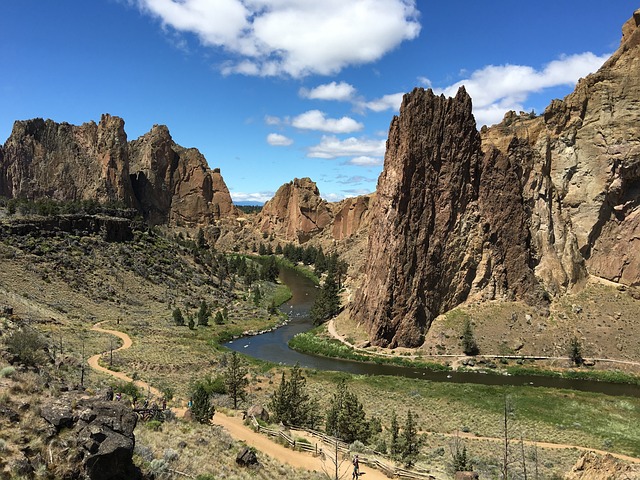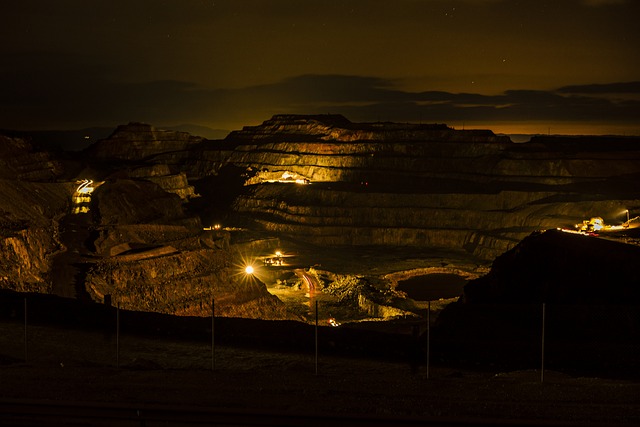Lane County, Oregon, experienced a transformative period during the mid-19th century's Oregon Gold Rush. The discovery of gold attracted thousands of prospectors, leading to the rapid growth and development of numerous booming towns like Eugene and Springfield. This era left an indelible mark on the region's history, economy, and culture, with mining claims shaping the landscape and fostering diverse communities. Today, Lane County's past as a hub for gold rush activities is preserved through historic sites and stories, reflecting its rich heritage and enduring impact.
“Uncover the transformative power of the gold rush in Lane County, Oregon, where a century-old tale of prospectors and booming towns shapes the region’s identity. Delve into the rich history of gold mining, from its humble beginnings to the bustling communities that sprang up across the county. Explore how the rise and fall of these temporary settlements left an indelible mark on both the landscape and the lives of Lane County prospectors. Discover the economic shifts sparked by this era and the enduring legacy of Oregon’s gold rush towns today.”
- The History of Gold Mining in Lane County: A Brief Overview
- Life for Lane County Prospectors During the Gold Rush
- The Rise and Fall of Oregon's Gold Rush Towns
- Mining Claims and Their Impact on Lane County's Landscape
- Economic Shifts: How the Gold Rush Transformed Lane County
- The Legacy of Lane County's Boomtowns Today
The History of Gold Mining in Lane County: A Brief Overview

Lane County, Oregon, has a rich history tied to gold mining, dating back to the mid-19th century during the state’s booming economic period. The discovery of gold in the region attracted prospectors from all over, sparking a rush that transformed the local landscape and communities. This era left an indelible mark on Lane County’s identity, shaping its towns and economy.
The Oregon Gold Rush brought a surge of settlers to the area, each hoping to strike it rich. Many found success along the rivers and streams, where gold was abundant. Prospectors staked their claims, established boomtowns, and formed robust mining communities. These towns became hubs of activity, offering services to the miners and fostering a unique, vibrant atmosphere that characterized the period. The economics of gold rush fueled the growth of Lane County, leaving behind a legacy that still resonates in its historical sites and the stories passed down through generations.
Life for Lane County Prospectors During the Gold Rush

Life for Lane County prospectors during the Gold Rush was a mix of excitement and hardship. With the discovery of gold in nearby rivers and streams, thousands flocked to what became known as Oregon’s gold rush towns, including those in Lane County. Prospectors staked their claims along the McKenzie River, Bear Creek, and other waterways, hoping to strike it rich with each pan of gravel. The economy boomed, fueling a surge in population and the rapid development of boomtowns across the county.
These prospectors came from all walks of life, drawn by the promise of fortune. They lived in rough shacks or tents, often working long hours in harsh conditions. The gold rush attracted a diverse group, including experienced miners, farmers leaving their fields, and even entire families seeking a new start. Lane County’s landscape was transformed as mining claims sprang up, and the once-quiet countryside became a bustling hub of activity, reflecting the dynamic and unpredictable nature of the gold rush economics.
The Rise and Fall of Oregon's Gold Rush Towns

The gold rush in Lane County, Oregon, brought about a significant transformation in the region’s landscape and communities. Small towns sprouted up overnight, each fueled by the promise of riches from the rich mineral deposits hidden beneath the earth. Prospectors flocked to Lane County, drawn by tales of untapped gold veins and the potential for life-changing wealth. This period saw the rapid growth of boomtowns like Eugene and Springfield, which became bustling hubs of mining activity, commerce, and social interaction. The economy boomed as miners poured in, leading to a diverse and dynamic local market.
However, as with any gold rush, the initial fervor eventually waned. Many mines played out their resources faster than expected, and others proved less lucrative than anticipated. The shift from a mining-driven economy to more sustainable industries was challenging for these once-thriving towns. Some struggled to adapt, while others faded away, leaving behind remnants of their former glory. Today, the legacy of Lane County’s gold rush can still be seen in historic sites and the stories passed down through generations, serving as a reminder of the rise and fall of these Oregon gold rush towns.
Mining Claims and Their Impact on Lane County's Landscape

The gold rush in Lane County, Oregon, brought a significant influx of prospectors seeking their fortunes. These intrepid individuals flocked to the region, captivated by tales of rich veins and untapped resources. As a result, mining claims became a central aspect of the county’s landscape and economy during this period. Each claim represented a prospector’s hope for prosperity and played a pivotal role in shaping the local geography.
The impact of these claims was profound. Lane County’s once-serene terrain underwent transformation as miners carved out paths, dug into hillsides, and established campgrounds that eventually grew into bustling boomtowns. These towns became hubs of economic activity, with saloons, general stores, and businesses springing up to cater to the needs of the mining community. The landscape was not just altered physically but also socially and culturally, as diverse groups of people from all walks of life converged, driven by the allure of gold rush economics.
Economic Shifts: How the Gold Rush Transformed Lane County

The gold rush in Lane County, Oregon, brought about a profound economic transformation that left an indelible mark on the region’s history. With the discovery of rich gold deposits, prospectors flocked to the area, fueling a rapid growth in population and the establishment of numerous boomtowns. These mining communities sprang up across the county, each with its own unique character and appeal. The influx of people seeking their fortune led to a surge in demand for goods and services, stimulating local businesses and creating new opportunities.
Lane County’s gold rush economy was characterized by a diverse range of enterprises catering to miners and settlers alike. General stores, saloons, boarding houses, and blacksmiths flourished as essential services for the burgeoning population. The county’s vibrant markets became centers of trade, where miners could sell their findings and acquire supplies. This period saw the county’s infrastructure develop at a rapid pace, with new roads, bridges, and even railroads constructed to facilitate travel and transport of goods. The economic shifts brought about by the gold rush laid the foundation for Lane County’s future prosperity, shaping its landscape and culture in ways that are still evident today.
The Legacy of Lane County's Boomtowns Today

The legacy of Lane County’s boomtowns still echoes through its landscapes and history. Once bustling with prospectors seeking their fortunes, these towns were at the heart of Oregon’s gold rush. Today, while the wild fervor has subsided, remnants of this period remain—old mines and abandoned buildings tell tales of the past. The spirit of adventure and entrepreneurship that defined these boomtowns continues to inspire locals and visitors alike.
Many of Lane County’s original gold rush towns have been preserved, offering a glimpse into the economic shifts that transformed the region. Mining claims once staked by determined prospectors now lie dormant, but their impact on the local economy is indelible. The gold rush brought diversity and cultural richness, with folks from all walks of life converging in search of wealth. This diverse heritage contributes to the unique character of Lane County’s boomtowns, making them a testament to Oregon’s rich historical tapestry.
